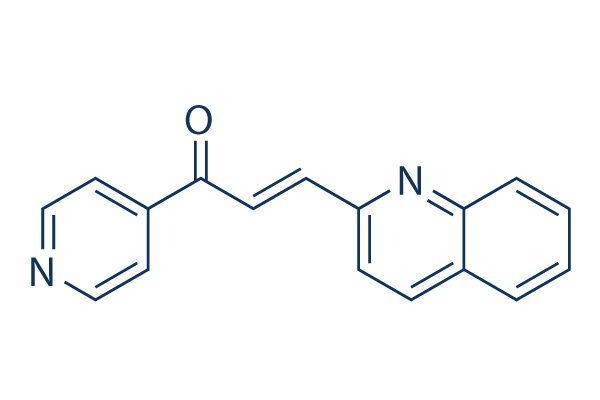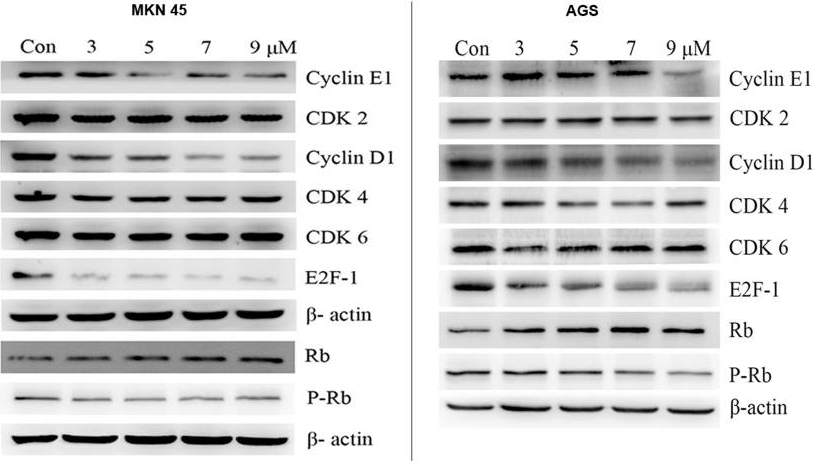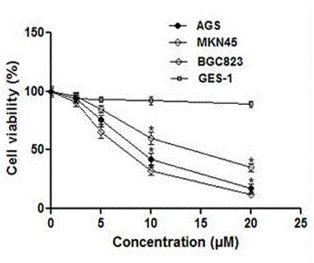
- Bioactive Compounds
- By Signaling Pathways
- PI3K/Akt/mTOR
- Epigenetics
- Methylation
- Immunology & Inflammation
- Protein Tyrosine Kinase
- Angiogenesis
- Apoptosis
- Autophagy
- ER stress & UPR
- JAK/STAT
- MAPK
- Cytoskeletal Signaling
- Cell Cycle
- TGF-beta/Smad
- DNA Damage/DNA Repair
- Compound Libraries
- Popular Compound Libraries
- Customize Library
- Clinical and FDA-approved Related
- Bioactive Compound Libraries
- Inhibitor Related
- Natural Product Related
- Metabolism Related
- Cell Death Related
- By Signaling Pathway
- By Disease
- Anti-infection and Antiviral Related
- Neuronal and Immunology Related
- Fragment and Covalent Related
- FDA-approved Drug Library
- FDA-approved & Passed Phase I Drug Library
- Preclinical/Clinical Compound Library
- Bioactive Compound Library-I
- Bioactive Compound Library-Ⅱ
- Kinase Inhibitor Library
- Express-Pick Library
- Natural Product Library
- Human Endogenous Metabolite Compound Library
- Alkaloid Compound LibraryNew
- Angiogenesis Related compound Library
- Anti-Aging Compound Library
- Anti-alzheimer Disease Compound Library
- Antibiotics compound Library
- Anti-cancer Compound Library
- Anti-cancer Compound Library-Ⅱ
- Anti-cancer Metabolism Compound Library
- Anti-Cardiovascular Disease Compound Library
- Anti-diabetic Compound Library
- Anti-infection Compound Library
- Antioxidant Compound Library
- Anti-parasitic Compound Library
- Antiviral Compound Library
- Apoptosis Compound Library
- Autophagy Compound Library
- Calcium Channel Blocker LibraryNew
- Cambridge Cancer Compound Library
- Carbohydrate Metabolism Compound LibraryNew
- Cell Cycle compound library
- CNS-Penetrant Compound Library
- Covalent Inhibitor Library
- Cytokine Inhibitor LibraryNew
- Cytoskeletal Signaling Pathway Compound Library
- DNA Damage/DNA Repair compound Library
- Drug-like Compound Library
- Endoplasmic Reticulum Stress Compound Library
- Epigenetics Compound Library
- Exosome Secretion Related Compound LibraryNew
- FDA-approved Anticancer Drug LibraryNew
- Ferroptosis Compound Library
- Flavonoid Compound Library
- Fragment Library
- Glutamine Metabolism Compound Library
- Glycolysis Compound Library
- GPCR Compound Library
- Gut Microbial Metabolite Library
- HIF-1 Signaling Pathway Compound Library
- Highly Selective Inhibitor Library
- Histone modification compound library
- HTS Library for Drug Discovery
- Human Hormone Related Compound LibraryNew
- Human Transcription Factor Compound LibraryNew
- Immunology/Inflammation Compound Library
- Inhibitor Library
- Ion Channel Ligand Library
- JAK/STAT compound library
- Lipid Metabolism Compound LibraryNew
- Macrocyclic Compound Library
- MAPK Inhibitor Library
- Medicine Food Homology Compound Library
- Metabolism Compound Library
- Methylation Compound Library
- Mouse Metabolite Compound LibraryNew
- Natural Organic Compound Library
- Neuronal Signaling Compound Library
- NF-κB Signaling Compound Library
- Nucleoside Analogue Library
- Obesity Compound Library
- Oxidative Stress Compound LibraryNew
- Plant Extract Library
- Phenotypic Screening Library
- PI3K/Akt Inhibitor Library
- Protease Inhibitor Library
- Protein-protein Interaction Inhibitor Library
- Pyroptosis Compound Library
- Small Molecule Immuno-Oncology Compound Library
- Mitochondria-Targeted Compound LibraryNew
- Stem Cell Differentiation Compound LibraryNew
- Stem Cell Signaling Compound Library
- Natural Phenol Compound LibraryNew
- Natural Terpenoid Compound LibraryNew
- TGF-beta/Smad compound library
- Traditional Chinese Medicine Library
- Tyrosine Kinase Inhibitor Library
- Ubiquitination Compound Library
-
Cherry Picking
You can personalize your library with chemicals from within Selleck's inventory. Build the right library for your research endeavors by choosing from compounds in all of our available libraries.
Please contact us at info@selleckchem.com to customize your library.
You could select:
- Antibodies
- Bioreagents
- qPCR
- 2x SYBR Green qPCR Master Mix
- 2x SYBR Green qPCR Master Mix(Low ROX)
- 2x SYBR Green qPCR Master Mix(High ROX)
- Protein Assay
- Protein A/G Magnetic Beads for IP
- Anti-Flag magnetic beads
- Anti-Flag Affinity Gel
- Anti-Myc magnetic beads
- Anti-HA magnetic beads
- Poly DYKDDDDK Tag Peptide lyophilized powder
- Protease Inhibitor Cocktail
- Protease Inhibitor Cocktail (EDTA-Free, 100X in DMSO)
- Phosphatase Inhibitor Cocktail (2 Tubes, 100X)
- Cell Biology
- Cell Counting Kit-8 (CCK-8)
- Animal Experiment
- Mouse Direct PCR Kit (For Genotyping)
- New Products
- Contact Us
research use only
PFK15 PFKFB inhibitor
PFK15 (PFK-015) is a potent and selective 6-phosphofructo-2-kinase (PFKFB3) inhibitor with IC50 of 207 nM.

Chemical Structure
Molecular Weight: 260.29
Purity & Quality Control
Batch:
Purity:
99.94%
99.94
Related Products
| Related Targets | PFKFB3 PFKFB4 | Click to Expand |
|---|---|---|
| Related Products | 3PO PFK158 KAN0438757 | Click to Expand |
| Related Compound Libraries | Kinase Inhibitor Library PI3K/Akt Inhibitor Library MAPK Inhibitor Library DNA Damage/DNA Repair compound Library Cell Cycle compound library | Click to Expand |
Mechanism of Action
| Targets |
|
|---|
In vitro |
||||
| In vitro | PFK15 produces potent growth inhibition in a series of cancer cells. In Jurkat T-cell leukemia cells and H522 lung adenocarcinoma cells, this compound also reduces F26BP, glucose uptake, and intracellular ATP level. [1] | |||
|---|---|---|---|---|
| Kinase Assay | Recombinant PFKFB3 assay | |||
| Kinase reactions are conducted by incubating 13 ng of recombinant human PFKFB3 protein in a reaction mix containing 10 μmol/L ATP, 10 μmol/L F6P, and either dimethyl sulfoxide (DMSO) vehicle control, 3PO, or PFK15 for 1 hour at room temperature. Kinase activity is measured with the Adapta Universal Kinase Assay per manufacturer | ||||
| Cell Research | Cell lines | 59 cancer cell lines | ||
| Concentrations | ~30 μM | |||
| Incubation Time | 48 hours | |||
| Method | Viability is determined using trypan blue exclusion. Cells were incubated in 20% trypan blue for 5 minutes. Cells excluding trypan blue are counted using a standard hemocytometer to determine the total number of viable cells. Experiments are conducted in triplicate. |
|||
| Experimental Result Images | Methods | Biomarkers | Images | PMID |
| Western blot | Cyclin E1 / CDK2 / Cyclin D1 / CDK4 / CDK6 / E2F1 / Rb / p-Rb |

|
27669567 | |
| Growth inhibition assay | Cell viability |

|
27669567 | |
In Vivo |
||
| In vivo | In vivo, PFK15 has adequate pharmacokinetic properties. This compound (25 mg/kg i.p.) suppresses the growth, metastatic spread, and glucose metabolism of LLC tumors in syngeneic mice. In three human xenograft models of cancer in athymic mice, it also yields antitumor effects that are comparable to approved chemotherapeutic agents. [1] | |
|---|---|---|
| Animal Research | Animal Models | C57Bl/6 mice bearing LLC xenografts, Balb/C athymic mice bearing CT26, U-87 MG, or BxPC-3 xenografts. |
| Dosages | 25 mg/kg every 3 days | |
| Administration | i.p. | |
References |
|
Chemical Information
| Molecular Weight | 260.29 | Formula | C17 H12 N2 O |
| CAS No. | 4382-63-2 | SDF | Download SDF |
| Synonyms | PFK-015 | ||
| Smiles | C1=CC=C2C(=C1)C=CC(=N2)C=CC(=O)C3=CC=NC=C3 | ||
Storage and Stability
| Storage (From the date of receipt) | |||
|
In vitro |
DMSO : 19 mg/mL ( (72.99 mM) Moisture-absorbing DMSO reduces solubility. Please use fresh DMSO.) Ethanol : 5 mg/mL Water : Insoluble |
Molecular Weight Calculator |
|
In vivo Add solvents to the product individually and in order. |
In vivo Formulation Calculator |
|||||
Preparing Stock Solutions
Molarity Calculator
In vivo Formulation Calculator (Clear solution)
Step 1: Enter information below (Recommended: An additional animal making an allowance for loss during the experiment)
mg/kg
g
μL
Step 2: Enter the in vivo formulation (This is only the calculator, not formulation. Please contact us first if there is no in vivo formulation at the solubility Section.)
% DMSO
%
% Tween 80
% ddH2O
%DMSO
%
Calculation results:
Working concentration: mg/ml;
Method for preparing DMSO master liquid: mg drug pre-dissolved in μL DMSO ( Master liquid concentration mg/mL, Please contact us first if the concentration exceeds the DMSO solubility of the batch of drug. )
Method for preparing in vivo formulation: Take μL DMSO master liquid, next addμL PEG300, mix and clarify, next addμL Tween 80, mix and clarify, next add μL ddH2O, mix and clarify.
Method for preparing in vivo formulation: Take μL DMSO master liquid, next add μL Corn oil, mix and clarify.
Note: 1. Please make sure the liquid is clear before adding the next solvent.
2. Be sure to add the solvent(s) in order. You must ensure that the solution obtained, in the previous addition, is a clear solution before proceeding to add the next solvent. Physical methods such
as vortex, ultrasound or hot water bath can be used to aid dissolving.
Tech Support
Answers to questions you may have can be found in the inhibitor handling instructions. Topics include how to prepare stock solutions, how to store inhibitors, and issues that need special attention for cell-based assays and animal experiments.
Tel: +1-832-582-8158 Ext:3
If you have any other enquiries, please leave a message.
* Indicates a Required Field





































